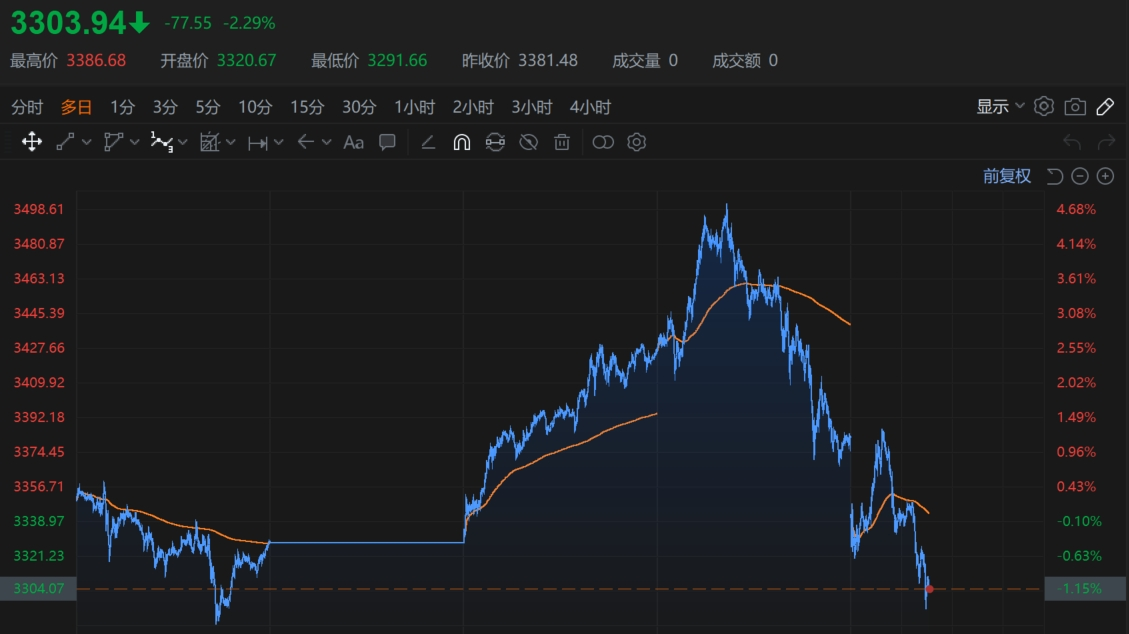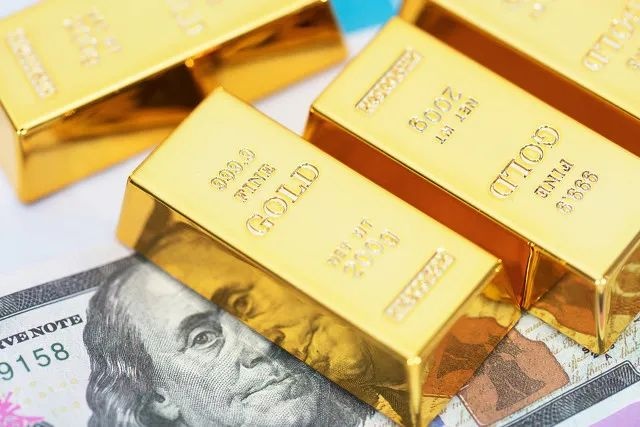Despite sharp short-term fluctuations, gold's long-term value support has not collapsed.
On April 23, the international and domestic gold markets simultaneously staged a "high diving".As of press time, London spot gold prices fell by 2.29% within the day, New York COMEX gold futures fell by nearly 2%, and the main contract of Shanghai gold futures plunged by more than 3%, falling below the psychological barrier of 800 yuan/gram.

Reversal of policy expectations: The Federal Reserve's "Eagle Shadow" and the Restructuring of Market Logic
The core trigger point of this round of gold price correction stems from the market's repricing of the Federal Reserve's monetary policy path.Although the market had generally bet that the Federal Reserve would start cutting interest rates in June 2025 (the probability was once as high as 68%), the resilience of recent U.S. inflation data and hawkish remarks by some officials have loosened this expectation.In March, the year-on-year increase in core CPI remained at a high level of 2.8%. Coupled with the unexpected performance of non-agricultural employment data, discussions within the Federal Reserve on "postponing interest rate cuts or even restarting interest rate hikes" gradually surfaced.This reversal of policy expectations directly pushed up the US dollar index (returning to the 104 mark) and the real interest rate on 10-year U.S. bonds (climbing above 4.6%), causing the cost of holding gold as an interest-free asset to rise significantly, and institutional funds began to withdraw from gold ETFs on a large scale.Data showed that the world's largest gold ETF SPDR positions had a net reduction of more than 30 tons for 12th consecutive days, setting the longest selling cycle since 2021.
Geo-risk mitigation and the crowding out effect of "hedging premium"
The phased easing of geopolitical risks has further weakened the short-term appeal of gold.The progress of negotiations on the Russia-Ukraine conflict, the partial cooling of the situation in the Middle East, and the phased stalemate in the tariff war between China, the United States and Europe (for example, the EU's final ruling on a 35% tax increase on new energy vehicles on China has not yet been implemented) have led to a marginal decline in market risk aversion.This change is particularly evident in the derivatives market: open interest in COMEX gold futures plunged 18% after prices surged higher, indicating that speculative funds are accelerating their exit.At the same time, container detention in Shanghai Port has fallen from a peak of 32%, and concerns about supply chain rupture have also reduced safe-haven buying demand for physical gold.
Technical overbought and leveraged funds "killing more" dilemma
From the perspective of technical analysis, the gold market has long shown signs of fatigue.Analysts said that since March, the current price of London gold has risen by more than 29%, and the daily relative strength index (RSI) continues to be in the extremely overbought range above 88, which even exceeds the technical indicators before the historical high in 2011.When the gold price exceeded US$3350/ounce, the automatic sell orders triggered by the programmatic trading model resonated with the liquidity covering demand of hedge funds, resulting in a concentrated release of selling pressure.What is even more alarming is that the domestic gold futures market has attracted a large influx of leveraged funds due to the appreciation of the RMB exchange rate and the high premium rate (more than 24% premium to the international gold price), and the rapid withdrawal of such funds often triggers a "stampede" decline.Morgan Stanley estimates show that if the price of gold falls below the support level of US$3280, it may trigger passive selling by quantitative funds of about US$20 billion.
Long-term supporting logic has not changed: golden resilience under structural contradictions
Despite sharp short-term fluctuations, gold's long-term value support has not collapsed.
Kamakshya Trivedi, global head of foreign exchange, interest rates and emerging markets at Goldman Sachs, said that the US dollar has entered a period of sustained long-term decline and will fall along with US Treasury bonds and US stocks. Foreign investors are now reassessing the risk return of dollar-denominated assets.
On the other hand, the global central bank's gold purchase boom is still continuing-China's central bank has increased its holdings of gold for 20 consecutive months, and official reserves have exceeded 73.7 million ounces; World Gold Council data shows that the proportion of global central bank gold reserves will rise to more than 20%, setting a new high after the disintegration of the Bretton Woods system.
JPMorgan Chase pointed out that investors and central banks have continued to have strong demand for gold, with an average net demand of 710 tons per quarter this year.If demand continues to exceed expectations, upside risks will increase.
In addition, the wavering U.S. dollar credit system (increased uncertainty in the Trump administration's policies) and the rising risk of "stagflation"(U.S. GDP growth slowed to 1.8% in the first quarter) are still strengthening the monetary attributes and anti-inflation functions of gold.Goldman Sachs latest forecast will raise its gold target price in 2025 to US$3700/ounce. In extreme scenarios, it may hit the US$4000 mark in 2026.


